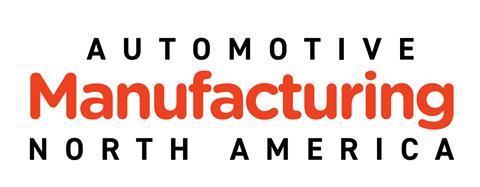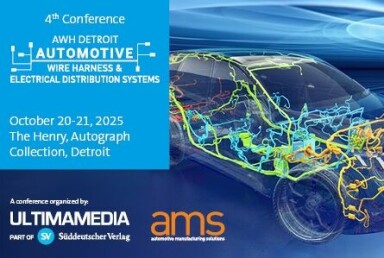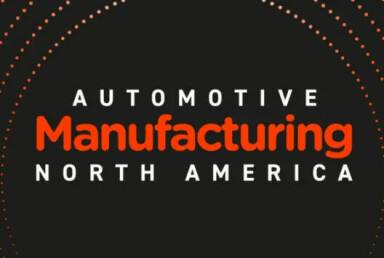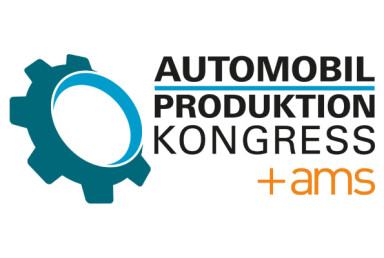Flexible production strategies
How flexibility, digitalisation and workforce agility are reshaping auto manufacturing
From multi-powertrain assembly lines and digital twin-enabled operations to agile supply networks and adaptive workforce models, OEMs and suppliers are redesigning the production floor for a future that rewards flexibility and responsiveness.
“Flexibility is no longer a luxury—it’s a requirement.” That’s how Chris Glover, former EVP of Volkswagen Group of America’s Chattanooga operations, described the evolving demands on today’s automotive factories at the AMS Evolution North America 2024 conference. His words echo across an industry now facing increasing pressure to adapt - technically, digitally, and organisationally - to a more volatile, electrified, and software-defined landscape.
As OEMs confront rising product complexity, unstable global trade dynamics, and the urgent need for more sustainable operations, manufacturing models built on fixed lines and long cycles are quickly becoming obsolete. In their place, a new blueprint is emerging - one where vehicle types can shift mid-week, robots and AGVs self-adjust in real time, and production networks respond as dynamically as the markets they serve.
Why automotive manufacturing must get flexible
One of the most pressing forces is market and demand volatility, especially as EV adoption patterns fluctuate across regions. Consumer incentives, tariff regimes and purchasing power remain fluid, making fixed, single-model production lines increasingly unsustainable - and, in today’s cost climate, unaffordable.
Compounding this volatility is a sharp profit squeeze: energy, materials and labour costs have climbed, while EV sales volumes are tracking below earlier forecasts. OEMs must therefore extract more value from existing assets and lower the cost-per-unit of electrified vehicles, or risk losing to a new wave of lower-priced Chinese EV imports.
Meanwhile, the technological shift to electrified and software-defined vehicles (SDVs) demands strong retooling speed. Over-the-air updates, zonal architectures and rapidly iterating battery chemistries require flexibility not only in hardware but in software integration across the factory floor.
Regulatory and sustainability pressures add another layer: stricter emissions targets, lifecycle carbon assessments and circular-economy mandates push OEMs toward adaptable systems capable of scaling recycling, second-life battery operations and closed-loop materials.
Finally, the pandemic and geopolitical shocks have exposed the fragility of global value chains. Manufacturers are therefore leaning into localisation, regionalisation and just-in-case inventory models - all of which depend on flexible capacity that can pivot when upstream disruptions hit.
Critically, OEMs are responding by optimising capacity utilisation across their current footprints, compressing product-development timelines and simplifying vehicle architectures. Cross-functional collaboration between design, engineering and production teams - supported by digital tools for simulation and orchestration - is becoming the norm, enabling factories to “do more with less” capital while maintaining quality and performance.
Inside the flexible factory
Manufacturing flexibility is multi-dimensional, requiring a combination of adaptive production systems, digital enablement, workforce readiness, and supply chain collaboration. Together, these dimensions allow automotive manufacturers to respond to product variation, market shifts, and operational disruptions while maintaining competitiveness and efficiency.
Product and powertrain flexibility
At the core of flexible manufacturing is the ability to produce multiple vehicle variants - including internal combustion engine (ICE), hybrid, and battery electric vehicles (BEVs) - on shared lines.
To unlock true multi-powertrain throughput, OEMs are redesigning the body-in-white using standard positioning points and universal carriers that suit all vehicle types. Automated systems like servo-controlled framing stations and adaptive grippers adjust in real time to different model shapes, removing the need for model-specific tooling. High-speed scanners check each vehicle’s dimensions and feed data to a digital twin of the line, which helps correct alignment issues on the next cycle - ensuring consistent quality without interrupting flow.
Honda’s Ohio EV Hub exemplifies this strategy. Across its Marysville, East Liberty, and Anna Engine Plants, Honda is investing over $1 billion to retool for mixed powertrain production. The same lines will build ICE, hybrid, and EV models using a shared assembly structure, enabled by common monument-based processes and digital coordination.
“When you think about flexibility [ICE, hybrid, EV] and for us to be able to do this and scale it from an existing facility, then ultimately you can pass that positioning onto the customer to say we can build any of these vehicles in these existing facilities based on what’s happening in the market,” Mike Fischer, project lead, Honda NA
Similarly, BMW’s Regensburg plant, which won the ‘Factory of the Year’ award in 2024, produces multiple drivetrains - including the BMW X1 with ICE, plug-in hybrid, and BEV options - on a single flexible line. The plant rolls out up to 1,400 BMW X1 and X2 models each day.
Modular and scalable production cells are also expanding flexibility. Companies like Comau and Siemens are developing modular assembly systems that allow OEMs and suppliers to scale output or adjust configurations quickly. Comau, for example, applies modular “production islands” in e-drive and battery assembly, allowing different cell formats and volumes without full-line reengineering. Siemens supports similar adaptability through standardised automation platforms, enabling plug-and-play integration of robots and AGVs across lines.
Digital and orchestration flexibility
Digital transformation is a critical enabler of flexible manufacturing. Technologies like digital twins, AI-driven orchestration, and industrial IoT platforms allow manufacturers to simulate, manage, and optimise production systems in real time.
These systems shift production control from static planning to continuous real-time orchestration. AI-powered scheduling engines, IIoT-enabled equipment telemetry, and centralised data lakes allow plants to re-sequence workflows, reallocate resources, and anticipate bottlenecks before they impact throughput.
BMW Regensburg’s cloud traffic-control system illustrates this: more than 500 AGVs publish position and battery-health data every 100 ms, allowing swarm optimisation that has cut in-plant material lead-time by up to 30%. This logistical flexibility is essential in mixed-model production environments where timing and variant alignment are critical.
“We are using AI for quality control in vehicle assembly. In this way, we are optimising our production processes and creating added value for our products and, ultimately, for our customers,” Armin Ebner, Head of Plant Regensburg, BMW
Honda’s battery pack assembly line at Marysville facility operates 75 production cells supported by digital twin models, enabling simulation of different product flows, equipment maintenance planning, and real-time performance monitoring. This provides the agility to expand, contract, or modify operations based on vehicle variants and demand, without interrupting the main assembly line.
Workforce and organisational flexibility
While automation plays a key role, human adaptability remains a vital dimension of manufacturing flexibility. As production lines become more complex and variable, upskilling the workforce and designing ergonomic, user-friendly environments are critical.
At the AMS Evolution North America 2024 conference, Chris Glover, former EVP of VW Group of America’s Chattanooga Operations highlighted the significance of workforce in flexible manufacturing system. “Over the past two years, we’ve hired 3,500 new employees and implemented robust training programs. These programs include basic skills training, industry-specific professional training, and on-the-job learning,” he said.
Daimler Truck and JLR both place strong emphasis on workforce development and strategic planning. Daimler Truck has implemented a structured onboarding programme for contract employees and is actively investing in upskilling initiatives to support long-term talent retention.
JLR is broadening its transformation training to include senior leaders and is focused on strategic workforce planning to anticipate future needs, address skill gaps, and build career pathways aligned with its long-term goals. The company’s National Innovation Centre serves as a key site for developing and training staff in emerging technologies.
Supply chain and partner flexibility
Manufacturing flexibility extends beyond the factory walls into the supply chain. OEMs are increasingly relying on supplier diversification, localisation, and multi-party partnerships to ensure supply agility and cost resilience.
To support this, companies are adopting configuration lifecycle management (CLM) to synchronise parts sourcing with vehicle customisation, while supply ecosystems are being digitised for real-time traceability and disruption response. Strategic buffering, nearshoring, and flexible contracting models with tier-1s and logistics providers allow plants to adapt material flow and build schedules quickly.
Externally, OEMs are embracing multi-OEM contract assemblers like Magna, whose flexible body-shops use re-codable hemming presses and quick-swap end-effectors to pivot between programmes with <120-min downtime. On the inbound side, mixed-size AGV trains shuttle kitted modules from supplier-managed miniload AS/RS systems straight to point-of-use, compressing inventory buffers and insulating final assembly from upstream volatility
Honda’s joint venture with LG Energy Solution for battery production in Jeffersonville, Ohio, is another example. The JV ensures a secure and scalable battery cell supply aligned with production needs across multiple plants.
In parallel, emerging models like lean-agile hybrid supply networks are gaining ground. These combine the efficiency of lean production with the responsiveness of agile methods - supported by data visibility, digital inventory platforms, and regionalised manufacturing strategies.
The hidden costs of flexibility
While the benefits of flexible manufacturing are increasingly clear, implementation comes with significant challenges and trade-offs that manufacturers must navigate carefully. One of the most immediate hurdles is the high capital expenditure required to establish flexible systems - particularly in automation, digital infrastructure, and modular tooling.
The ABB/AMS survey shows that 54% of industry respondents cite high initial costs as the primary barrier to smart factory development
While the flexibility to pivot production between ICE, EV, and hybrid models is attractive, advanced automation, modular cells, and digital systems require heavy initial investment. Such capital-intensive projects must be carefully justified by projected efficiency gains and long-term utilisation gains.
System integration complexity is another challenge. Flexible factories demand seamless interoperability between software systems (MES, PLM, ERP) and physical assets (robots, conveyors, sensors). The ABB/AMS survey shows that 54% of industry respondents cite high initial costs as the primary barrier to smart factory development, while 35% flagged technical integration hurdles - highlighting how complex end-to-end architecture can stall deployment
Moreover, firms must balance flexibility and productivity. Highly adaptable lines designed for mixed-model production may struggle to match the efficiency of dedicated, single-model mass lines. Optimising layout, changeover scripts, and predictive scheduling becomes essential to avoid diluting output potential.
Change management adds another layer of complexity. Workers must be trained to adapt to new roles, tools, and digital interfaces - often in parallel with ongoing production. At Honda, for example, ergonomic redesigns and digital instructions were implemented to ease this transition.
What’s next for flexible, intelligent manufacturing?
The future of flexible manufacturing lies in the convergence of automation, AI, and IIoT to create smart, self-optimising factories. These systems will continuously learn, adapt, and reconfigure in real time - minimising downtime, enhancing quality, and supporting model variation without major intervention. As digital twins become more sophisticated and widespread, manufacturers will be able to simulate and scale new production setups across global facilities with minimal disruption.
At the supply chain level, the industry is moving toward “leagile” networks - a hybrid of lean efficiency and agile responsiveness. With the help of configuration lifecycle management (CLM), OEMs can support mass customisation by synchronising design, production, and logistics from the earliest stages of vehicle development.
Emerging production paradigms such as gigacasting, digital-twin fleets, and microfactories are also gaining traction. These innovations promise reduced part complexity, faster changeovers, and decentralised production closer to demand centres - all reinforcing the need for flexible infrastructure.
| Future flex strategy | OEMs / companies implementing | Implementation |
|---|---|---|
| Smart, Self-Optimising Factories (Automation, AI, IIoT) | BMW (iFACTORY, Regensburg, Hams Hall) | BMW uses 100+ AI and digital twin apps to optimise processes in real-time, enabling adaptive, high-mix production across global plants. |
| Gigacasting | Volvo, Toyota, Hyundai, Ford | Volvo added IDRA giga-presses in Slovakia; Toyota, Hyundai, and Ford are exploring or deploying mega-casting for structural EV components. |
Importantly, strategic flexibility is evolving into a defensive asset. As markets face mounting geopolitical tension, trade volatility, and rapid technological change, flexible operations offer a hedge against disruption - allowing manufacturers to pivot with speed, preserve profitability, and sustain competitive advantage in an unpredictable world.




